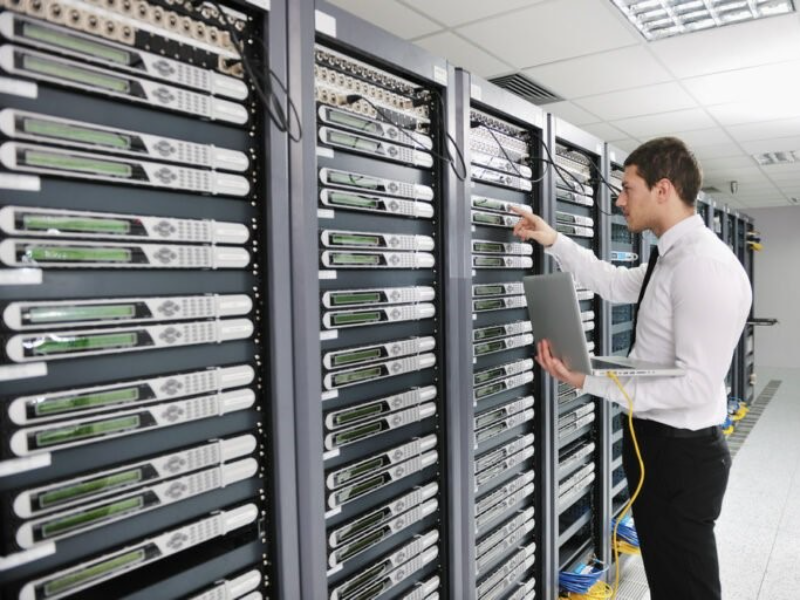- A power distribution unit (PDU) is a high-capacity power strip designed for data centres and IT environments.
- Advanced PDUs provide remote control capabilities and detailed monitoring, enhancing safety, efficiency, and convenience in power management.
Power distribution units (PDUs) are the unsung heroes of electrical systems, quietly working behind the scenes to ensure that power is delivered reliably and efficiently to various components. From data centres to home offices, PDUs play a crucial role in managing and distributing electrical power. In this blog, we’ll explore what PDUs are, how they function, and why they’re so important in today’s interconnected world.
What is a power distribution unit
A power distribution unit (PDU) is a sophisticated power strip designed for data centres and other IT environments. Unlike conventional power strips, PDUs are equipped with a significantly larger number of outlets—up to 60—and are capable of handling much greater power loads. They serve as the backbone of power distribution in data centres, ensuring that power is efficiently distributed across racks, cabinets, and IT equipment.
Also read: Exploring nuclear power plants: Engineering energy solutions
Key functions of power distribution units
Power Distribution: PDUs distribute power to multiple outlets, allowing multiple devices to be connected to a single power source.
Circuit Protection: They often include circuit breakers or fuses to protect against overloads and short circuits.
Power Monitoring: Advanced PDUs can monitor power usage, helping users to understand their energy consumption patterns.
Also read: From atoms to energy: Common sense nuclear power on the rise
Types of power distribution units
There are several types of PDUs, each designed to serve different purposes and environments.
Basic PDUs
Functionality: These are the simplest form of PDUs, providing basic power distribution without any additional features.
Usage: Ideal for home offices or small-scale applications where power distribution is straightforward.
Metered PDUs
Functionality: These PDUs include basic monitoring capabilities, allowing users to track power usage at the outlet level.
Usage: Suitable for data centres and office environments where tracking power consumption is necessary.
Switched PDUs
Functionality: Offer remote control capabilities, enabling users to turn outlets on or off remotely.
Usage: Ideal for data centres and remote locations where physical access to the PDU is limited.
Intelligent PDUs
Functionality: Provide advanced monitoring and control features, including real-time data on power usage, temperature, and humidity.
Usage: Best suited for mission-critical applications where detailed monitoring and control are essential.
How do power distribution units work
PDUs work by receiving electrical power from the main supply and distributing it to various outlets. They typically consist of a housing unit containing a series of outlets, along with internal circuitry and protective devices.
1. Power Flow
Input: Electrical power enters the PDU through an input cable or connector.
Distribution: The power is then distributed to multiple outlets, allowing various devices to be plugged in.
Output: Devices connected to the PDU receive a stable and controlled supply of power.
2. Safety Features
Circuit breakers: These devices interrupt the flow of electricity in case of an overload or short circuit, preventing damage to equipment.
Fuses: Similar to circuit breakers, fuses provide protection against electrical faults by melting under excessive current.
Benefits of using power distribution units
The benefits of using PDUs are numerous, especially in environments where power management is critical.
1. Enhanced Safety
Protection: Circuit breakers and fuses provide an added layer of safety, protecting against electrical hazards.
Compliance: PDUs help organisations comply with safety standards and regulations.
2. Improved Efficiency
Power management: Advanced PDUs offer tools for monitoring and controlling power usage, leading to more efficient energy consumption.
Cost savings: By optimising power distribution, PDUs can help reduce energy costs.
3. Ease of Use
Flexibility: PDUs provide a flexible solution for managing power distribution, accommodating changes in the number of devices.
Convenience: Remote control features make it easy to manage power distribution from anywhere.

